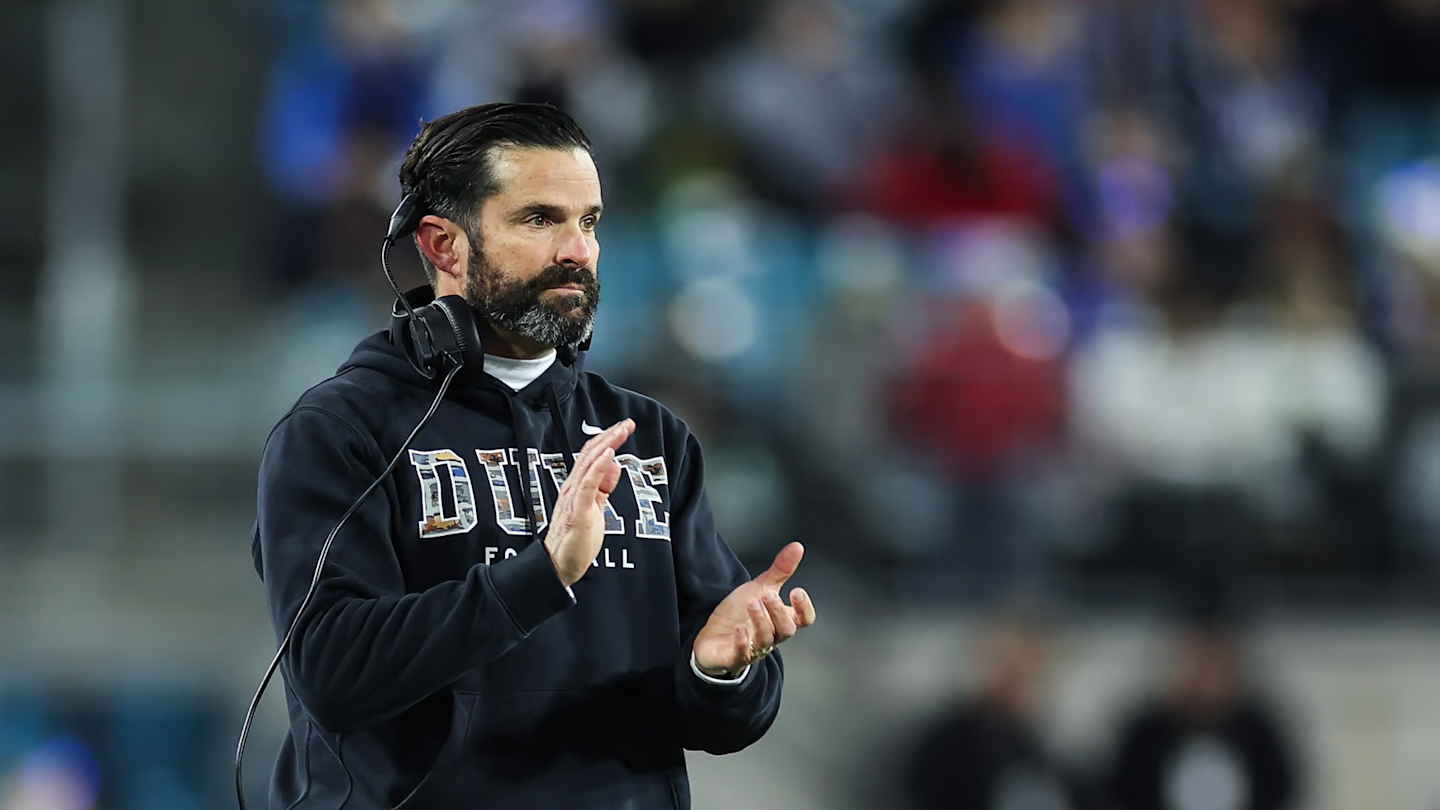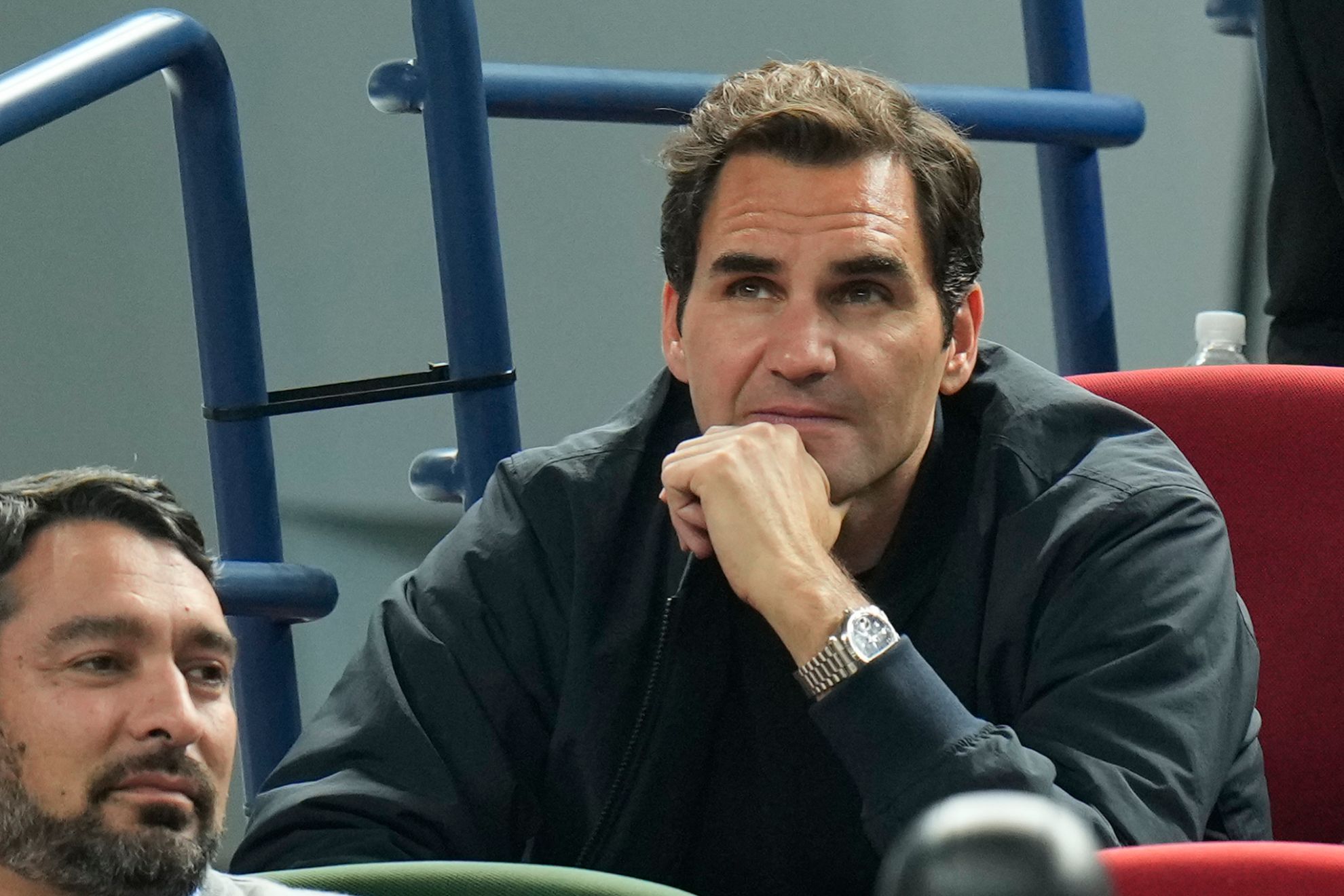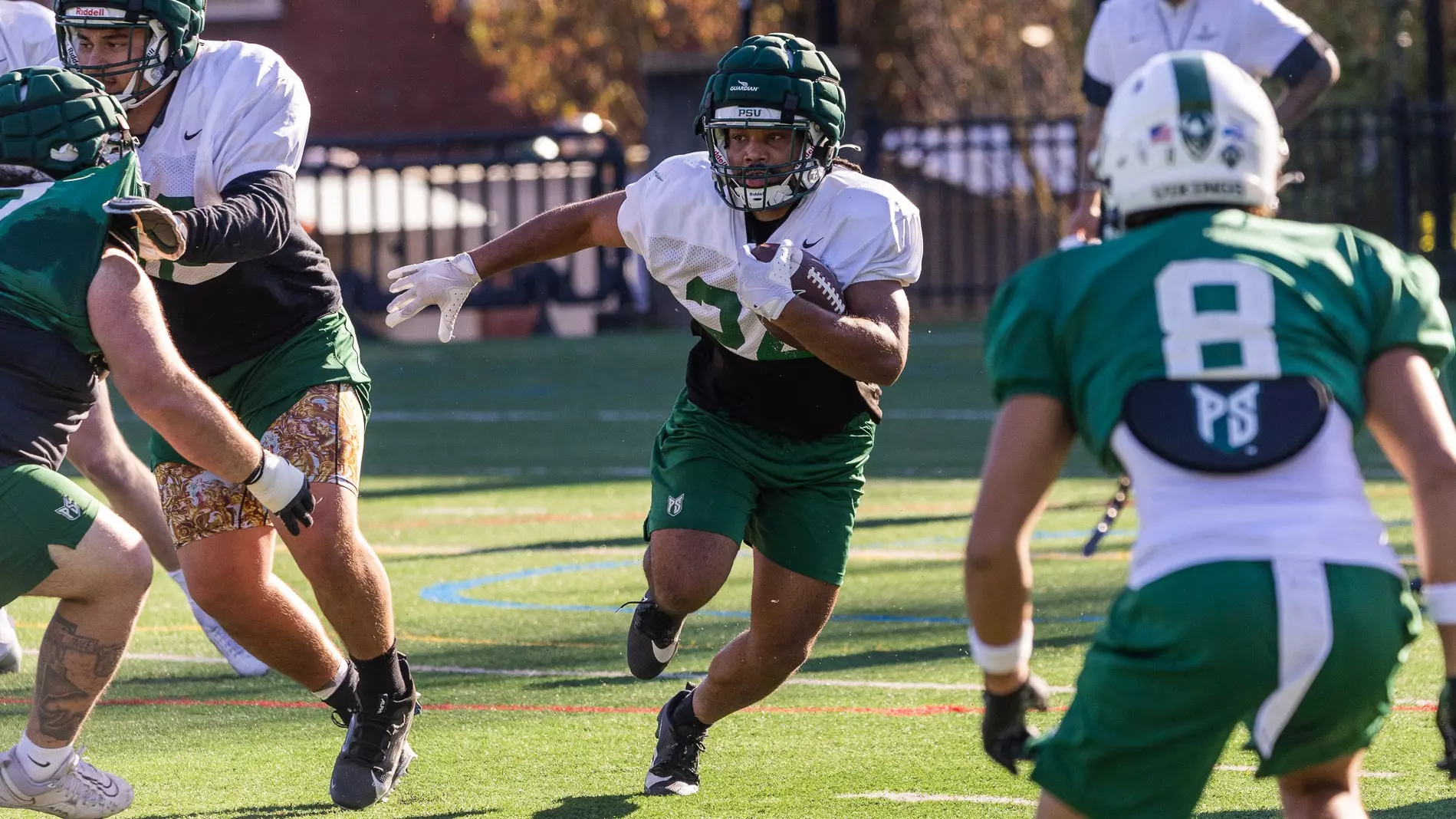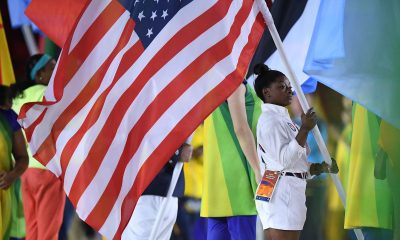NIL
Anthony Hill Jr. NIL: How Much Are the Texas LB’s NIL Deals Worth
Anthony Hill Jr., the Texas Longhorns’ star linebacker, has emerged as a marketable name in college football. As a 2024 Second-Team All-American, his on-field potential with 113 tackles, 8 sacks, and 4 forced fumbles last season has translated into good Name, Image, and Likeness (NIL) deals. In a scene where Texas athletes have collectively earned […]

Anthony Hill Jr., the Texas Longhorns’ star linebacker, has emerged as a marketable name in college football. As a 2024 Second-Team All-American, his on-field potential with 113 tackles, 8 sacks, and 4 forced fumbles last season has translated into good Name, Image, and Likeness (NIL) deals.
In a scene where Texas athletes have collectively earned millions, Hill’s rising value holds a lot of potential for bagging NIL deals and sponsorships.

How Much Is Anthony Hill Jr.’s NIL Deals’ Value And Net Worth?
Since the NCAA permitted NIL compensation in 2021, Texas has become one of the big whales in the NIL sea. They had athletes amassing more than $15.6 million across 2,980 deals by June 2023. Football has been the dominant sport in these deals alongside men’s basketball.
The Texas One Fund, the university’s primary NIL collective, spent over $11 million in 2023 alone, facilitating deals with brands like Bose and Goat Fuel for Longhorns players.
Anthony Hill benefits a lot from this ecosystem. His NIL valuation, as estimated by On3, stands at $631,000, which is an estimate based on his performance, social media presence, and marketability.
Hill’s 180 career tackles, 13 sacks, and 24.5 tackles for loss across 30 games make him one of the most promising players in his role. He is projected as a first-round pick in the 2026 NFL Draft.
In a recent appearance on The Pivot Podcast alongside teammate Colin Simmons, Hill discussed how NIL deals provide financial freedom, allowing him to approach football like a job. “It gets me excited to work out, run, lift, hit,” Hill said, highlighting how good money fuels his motivation.
Teammates like Kelvin Banks Jr. ($633,000) and Jonathan Brooks ($598,000) have secured high-value deals through Texas One Fund partnerships. Hill’s $631,000 valuation likely underestimates his actual earnings, given his status as a top-10 college football player and his role in a program with a rumored $35–40 million roster budget for 2025.
Hill’s deals include endorsements with national brands like Kane Footwear and Vanguard Volkswagen, similar to teammates’ partnerships with Bose or Goat Fuel. His social media engagement, though not quantified here, enhances his value, as brands prioritize players with strong fan connections.
Looking ahead, Hill’s NIL worth could climb as he enters his junior year. Continued dominance, potential Butkus Award contention, and Texas’ SEC spotlight could push his valuation closer to top earners like Arch Manning ($6.6 million).
KEEP READING: 2025 Way-Too-Early College Football Top 25 Power Rankings
For now, his $631,000 baseline reflects a rising star capitalizing on Texas’ NIL machine while setting the stage for a massive 2025 season.
College Sports Network has you covered with the latest news, analysis, insights, and trending stories in college football, men’s college basketball, women’s college basketball, and college baseball!
NIL
Is Pitt Properly Rated in EA Sports College Football 26?
EA Sports College Football 26 is just two weeks away from its release date on July 10 and more details inside the game are being revealed. That includes team ratings. So where does Pitt stack up compared to the other teams in the game? According to CFBrating.com, Pitt’s unofficial overall rating is a 78 — […]

EA Sports College Football 26 is just two weeks away from its release date on July 10 and more details inside the game are being revealed.
That includes team ratings. So where does Pitt stack up compared to the other teams in the game?
According to CFBrating.com, Pitt’s unofficial overall rating is a 78 — the 62nd ranked team in the game. The Panthers’ offense is an 80 overall, while the defense is an 86 overall.
Pitt boasts a top-10 rated defensive player in the game. All-American linebacker Kyle Louis is rated a 93 overall, which is the 17th highest-rated player and ninth-best defensive player.
Running back Desmond Reid is another one of the best players in the game. He was given a 91 overall rating and is the 90th-best player in the game.
Pitt was also heavily featured in an in-depth Road to Glory trailer that showcases a recruit’s path from high school to selecting Pitt and going onto the National Football League.
Got our guy
@EASPORTSCollege https://t.co/Jn0xDsSAAP pic.twitter.com/FhIUpRYt3f
— Pitt Panthers (@Pitt_ATHLETICS) June 27, 2025
It’s interesting to see how Pitt’s overall rating will adjust as the season goes on, but for now, they are on the lower side of Power Four teams and behind rival West Virginia. The Mountaineers were 10 spots higher with an 80 overall rating.
This year’s trailer showcased the Backyard Brawl with quarterback Eli Holstein weaving his way through the West Virginia defense before stretching at the goal line for a touchdown.
For the players sake, they will earn over double the money from EA Sports in the upcoming edition of College Football 2026.
According to a report from Chris Vannini of The Athletic, an email was sent to Football Bowl Subdivision players on Tuesday stating that those who opt into the video game will see name, image and likeness payments increase from $600 to $1,500 for the newest version.
The long-awaited College Football 25 game saw 14,000 players opt in with 11,000 players NIL officially used within the game. The number of players featured in the game is expected to remain the same. CFB25 went on to become the highest-selling sports game of all-time based on dollar sales.

NIL
Duke football among top 25 highest-rated schools
The team ratings have been revealed for EA Sports’ College Football 26, and the Duke football program is towards the top of the list. The Blue Devils were given a team rating of 84, ranked as the 23rd-highest team in the game. SMU, Tennessee, Missouri, and Auburn were also given 84 team ratings upon the […]

The team ratings have been revealed for EA Sports’ College Football 26, and the Duke football program is towards the top of the list. The Blue Devils were given a team rating of 84, ranked as the 23rd-highest team in the game. SMU, Tennessee, Missouri, and Auburn were also given 84 team ratings upon the release.
The Blue Devils, along with SMU, are the third-highest rated programs out of the Atlantic Coast Conference in the game. Clemson leads the way out of the ACC with a rating of 88, followed by Miami at 86.
EA Sports also released the top 25 offensive and defensive team ratings. Duke didn’t make the mark offensively, but was awarded the 16th-highest defensive team rating with an 88. This comes off a 2024 season where Manny Diaz’s group was one of the top defensive units in the nation, finishing second in the nation in tackles for loss (116), fourth in the nation in sacks (43), and 26th nationally in third-down conversion percentage (33.8). The Blue Devils are looking to build on that stellar defense in year two under Diaz after returning some of their top contributors from a season ago, most notably rising senior cornerback Chandler Rivers, who is viewed as one of the top returning secondary pieces in college football this upcoming season.
Now, Duke didn’t eclipse the top 25 mark offensively, but there’s a chance that offensive coordinator Jonathan Brewer can make some magic happen with his rebuilt core. Duke added stud transfer quarterback Darian Mensah from Tulane, who’s poised for a breakout redshirt sophomore campaign after signing a monster two-year, $8 million NIL contract with the program. Duke is also bringing back rising sophomore receiver Que’Sean Brown, who should be one of the most improved wide receivers out of the ACC after coming onto the scene midway through his freshman year.
The Duke program has pressure mounting on it to perform this season after a successful first year with Diaz at the helm, mixed with the huge investment the program made in its quarterback. Despite only being viewed as a middle-of-the-pack ACC team heading into the 2025 campaign, the Blue Devils are looking to push for their first ACC Championship since 1989.
NIL
Texas A&M Commit Joins Fellow WRs With Unique NIL Deal
The NIL era of college sports is simply fascinating. Less than a decade ago, the thought of high school athletes being able to profit off of NIL seemed unfathomable. Now, though, it’s commonplace, and a Texas A&M Aggies commit is getting in on the fun. Madden Williams – a four-star wide receiver from St. John […]

The NIL era of college sports is simply fascinating. Less than a decade ago, the thought of high school athletes being able to profit off of NIL seemed unfathomable. Now, though, it’s commonplace, and a Texas A&M Aggies commit is getting in on the fun.
Madden Williams – a four-star wide receiver from St. John Bosco High School in Bellflower, Calif. – has signed an NIL deal with Adidas as part of the Adizero Class of 2025, with “an emphasis on speed,” according to On3. He’s one of five wideouts in the class, joining Tristen Keys (LSU commit), Chris Henry Jr. (Ohio State), Calvin Russell and Kayden Dixon-Wyatt (Ohio State). Linebacker Tyler Atkinson is the lone non-receiver in the group.
As part of the program, Williams will participate in various campaigns throughout the year and represent the Adidas brand throughout his senior season. He, along with several other players in this class, signed with Adidas last year as part of the Adizero 7 roster.
Williams, the No. 32 receiver in the class according to On3’s rankings, is far from the only Aggie to sign a big NIL deal recently. Last month, quarterback Marcel Reed signed a unique NIL deal with private jet company ENG Aviation Group, and will help educate the public on organ donation.
“I’m really excited to team up with ENG Aviation,” Reed said in a statement. “It’s an honor to work with a local Texas company that’s doing something so important—helping save lives through organ donation. Their mission to save lives is something I wanted to join in on, and for us, this isn’t just a sponsorship—it’s a chance to make a real difference together, and I’m all in.”
Wide receiver KC Concepcion, who transferred in from NC State this offseason, has also reportedly earned $2.5 million in NIL money from brands such as Topps and Fanatics.
Williams has drawn praise from scouts for his route running and ability to make contested catches, putting his height of 6-foot-2 to good use. He’s not the fastest receiver in the world, but he more than makes up for that in other areas of his game.
The Aggies’ 2026 recruiting class currently ranks fourth in the country in On3’s rankings, and features three four-star wide receivers. In addition to Williams, they also have Aaron Gregory from Georgia and Mike Brown from Houston.
NIL
Roger Federer's long
Tennis superstar Roger Federer is now one of the few athletes who can count themselves a billionaire. Advertisement Federer, who won 20 grand slam titles between 2003 and 2018, amassed US$130.6 million in prize money during a 24-year playing career that ended in 2022. But the bulk of the Swiss star’s wealth has come via […]


Tennis superstar Roger Federer is now one of the few athletes who can count themselves a billionaire.
Advertisement
Federer, who won 20 grand slam titles between 2003 and 2018, amassed US$130.6 million in prize money during a 24-year playing career that ended in 2022. But the bulk of the Swiss star’s wealth has come via a series of bumper sponsorship deals, alongside an astute investment in a local sneaker brand.
His net worth is about US$1.3 billion, according to the Bloomberg Billionaires Index, putting him in elite company. Michael Jordan’s hit an estimated US$3.5 billion after the sale of his stake in the Charlotte Hornets in 2023, while last year Bloomberg calculated Tiger Woods’ wealth at about US$1.36 billion.
Federer is worth considerably more than US$1 billion, according to people close to him who spoke on condition of anonymity. Bloomberg’s valuation takes into account Federer’s career earnings, investments and endorsement deals, adjusted for prevailing Swiss tax rates and market performance.
Many of his deals have lasted decades, from sponsorships with Credit Suisse bank (now UBS Group AG), watchmaker Rolex and Swiss chocolatier Chocoladefabriken Lindt & Sprungli AG.

Federer has also built a close advisory network around him, including through Team8, the management company he co-founded with long-time agent Tony Godsick in 2013, and also the Swiss firm Format A AG, which helps manage various investments and his charitable foundation.
Advertisement
NIL
The Clemson Insider
CLEMSON — The NCAA vs House Settlement will go into effect on Tuesday, July 1, signaling a new era for college athletics. The settlement is supposed to mark a significant shift, formally ending the NCAA’s long-standing amateurism model and allowing for direct payment to athletes. The settlement calls for damages to former athletes, too, as the […]

CLEMSON — The NCAA vs House Settlement will go into effect on Tuesday, July 1, signaling a new era for college athletics. The settlement is supposed to mark a significant shift, formally ending the NCAA’s long-standing amateurism model and allowing for direct payment to athletes.
The settlement calls for damages to former athletes, too, as the NCAA, along with the SEC, Big Ten, ACC, Big 12 and the Pac 12 agreed to pay $2.8 billion in damages to former athletes who were prevented from earning compensation for their name, image and likeness (NIL) prior to 2021. This will be paid out over the next 10 years.
Starting on Tuesday, Division I schools that opt-in to the settlement can directly compensate student-athletes up to a revenue-sharing cap, initially set at $20.5 million per school. This cap is expected to increase annually.
The settlement also dealt with NIL rule modifications, as the NCAA can still restrict NIL payments from school-associated entities like booster collectives, while other third parties can enter NIL deals with student-athletes. These deals must be reported and approved by the school as part of a fair-market value.
However, the last part of the settlement might take a hit thanks to Friday’s United States Supreme Court ruling in the Trump v. CASA, Inc., case. This ruling primarily addressed the use of nationwide injunctions, a legal tool lower courts had used to block some of President Donald Trump’s policies.
The ruling against nationwide injunctions affects the NCAA because many such injunctions have been granted against its rules in recent years, particularly in cases involving NIL. For example, a Tennessee federal district court had previously issued a nationwide injunction preventing the NCAA from enforcing its NIL rules.
While the House settlement aims for stability, potential future conflicts could arise, particularly related to Title IX and how revenue is distributed between male and female athletes.
Twelve female athletes are in the process of appealing the House settlement, which was finalized on June 6. The women are arguing the structure of damages payments violates Title IX’s gender equity statute.
On June 11, CBS Sports reported eight athletes have signed onto the motion to appeal and at least six of whom were women that played at the College of Charleston. Two others are from Vanderbilt and Virginia.
Despite the appeals, the NCAA is optimistic the settlement ruling by Judge Claudia Wilken will be upheld.
As CBS Sports reported, the House settlement used a formula to determine how to distribute money. Football and men’s basketball athletes who received full scholarships at Power Five schools from June 15, 2016, to Sept. 15, 2024, are set to receive 90 percent of the more than $2 billion settlement. Women’s basketball athletes will receive 5 percent, and all other athletes will split the remaining 5 percent.
The female athletes filing the appeal are part of the third class. Most played volleyball or soccer at their respective schools.
Wilken wrote in the settlement approval that there’s nothing in the settlement itself that forces schools to contradict Title IX. She overruled objections that specifically claimed the settlement itself did not properly follow Title IX.
Instead, the settlement left the defining of Title IX compliance up to the schools and governing bodies.
NIL
The NIL Conundrum
He walked onto campus last week with a private jet’s schedule, not a backpack. A top recruit in football. His name alone earns social media blitzes. He’ll wear school colors for a run’through, then fly off to a private dinner with boosters to hash out his NIL deal. This wasn’t always how college sports began […]



He walked onto campus last week with a private jet’s schedule, not a backpack. A top recruit in football. His name alone earns social media blitzes. He’ll wear school colors for a run’through, then fly off to a private dinner with boosters to hash out his NIL deal. This wasn’t always how college sports began its fall season.
College, once the last sanctuary of amateurism, feels more like a draft combine with lockers. Players are signed, sealed, delivered–and departed–on sight of a check. Coaches pitch strategy and returns. Parents cheer, boosters sweat, compliance officers do clerical triage. Team? Cohesion? Loyalty? Those faded amid logos and ledger entries.
NIL started with good intentions. Let student-athletes profit from their name, image, and likeness. Three years later, it morphed into a free’agency circus–free agency with helmets.
Think of it. Under current rules, that football phenom at State U can land a $500,000 deal. Next week, a bigger offer comes from Rival U. He hops, no transfer portal drama needed–deal done, locker changed. Schools watch as talent drips away like water through a sieve. Teams morph every season. Bonds–built over grinds, shared locker room stories, long film sessions–get shredded by spreadsheets.
The Nico Iamaleava situation in Tennessee is only the beginning.
Want to pick apart the damage? Ask the smaller revenue sports:
Wrestling: top schools–Penn State, Iowa, Oklahoma State–pull in elite recruits via NIL-backed funds and have as many as 30 scholarships to dish out instead of the old 9.9. Mid’majors? They scrape by. Scholarships are few. Keep offers tight. Those kids chase dollars or drop out, because the NCAA’s eye’patch won’t see the imbalance. That drives the talent funnel toward big-name programs and leaves the field empty everywhere else.
Olympic sports? Title IX demands equity. But NIL deals mostly land in football and basketball. So schools use that money to subsidize others until there’s nothing left and they drop the sport. Ever try talking to a prom queen at a school that lost swimming? You don’t need a compliance manual to feel the loss.
We’ve become an era of “designated student’athletes.” Each school can dish out up to $20 million a year, but it goes to football and hoops. Texas A&M, for example, cut $10 million in program budgets to fund the decision, freezing out every other sport. They call it sustainability. I call it “you play what we pay for.”
Even among those “big’time” sports, the unfairness is wild. Coaches complain recruits arrive asking not “Will you coach me?” but “What’s my NIL ceiling?” One coach told investors: “We don’t recruit players–we recruit logos.” They see kids as walking billboards, not teammates. The locker room becomes a market, not a microcosm of trust.
That same coach noted early retirements are on the rise. Jim Larranaga, Tony Bennett–they walked away, unable to slog through rosters rebuilt each year. One year they coach. Next year, it’s a new team–fresh faces, no culture, no continuity.
Maybe you cheer that players now earn millions. Sure. But understand how lopsided the flow is. Take basketball phenom Cooper Flagg: nowhere near the NBA draft yet, but already valued at $4.8 million in NIL terms. A senior walk’on in women’s soccer? Probably zero. And if she transfers, no one’s writing a check. That gap erodes the ethos of college athletics.
Fans feel it. Saturdays feel hollower when every win is scripted around marquee names–and those names change every season. Regional identity? Gone. Loyalty? Dead. Instead, we get yearly film sessions during summer recruiting, not game film, but sponsor film. “Showcase your brand.” That’s the pregame now.
More worryingly, we’re testing the durability of amateurism. Courts are collapsing it. The $2.8 billion antitrust settlement did the deed: colleges can now pay directly from revenue. You think bidding wars stop at athletes? Collectives tied to boosters? That’s a short flight. Soon, coaches, staff and agents will jockey for a share. Schools will push spending limits. Then universities sue each other over caps. Free agency becomes full professionalization, and the NCAA becomes NCAA No More.
Supporters say NIL is overdue justice: players generate money, why not share? They point to inequality, poverty in athletes’ families, exploitation. That’s real. Before NIL, many prospects passed on real chances to provide for loved ones to play. That needed fixing.
But fix doesn’t always mean destroy. It didn’t have to bruise the sanctity of the team. It didn’t need to tilt the scales so hard. We could have capped deals by revenue share. We could have included every sport in the payout. We could have enforced limits per athlete. We did none of that. Instead, we opened Pandora’s locker room.
Does NIL empower athletes? Absolutely. Does it empower elite athletes and sports only? Also absolutely. Does it fracture small programs? Yep. It fractures coaching models built on trust. It fractures fan bases built on loyalty. It fractures college as a proving ground–where kids hone their skills, bond, momentarily shine, then move on. Now it’s sharper, faster and compensated. Maybe more efficient. But definitely not amateur.
So what’s the alternative? If we want real reform, let’s cap payments at a fraction of revenue and split it across every rostered athlete, not just the superstars. Reward participation, not prime time popularity. Tie pay to headship of the roster, with a minimum NIL stipend for everyone. Force schools to demonstrate Title IX equity in NIL payouts. Stiffen tampering rules when athletes break signed deals to chase price hikes. Fund all sports, not only profit ones.
Otherwise, expect more lawsuits, such as the Wisconsin-Miami tampering case. Expect more retirements. Expect more roster grief. Expect college sports unspooling, one NIL deal at a time.
College once felt sacred because it was shared: students and athletes in classrooms and on fields, tied by a shared identity. That identity came through sacrifice and teamwork, not sponsorship. Now, sacrifice is optional. Loyalties shift with the dollar. And the line between college and pro gets thinner by the minute.
NIL could be remembered as the moment college sports matured–or the moment we killed what made it stick.
-

 Motorsports2 weeks ago
Motorsports2 weeks agoNASCAR Weekend Preview: Autódromo Hermanos Rodríguez
-

 Motorsports3 weeks ago
Motorsports3 weeks agoNASCAR Through the Gears: Denny Hamlin has gas, a border needs crossing, and yes, that’s a Hemi
-

 Health2 weeks ago
Health2 weeks agoGymnast MyKayla Skinner Claims Simone Biles 'Belittled and Ostracized' Her amid Riley …
-

 High School Sports3 weeks ago
High School Sports3 weeks agoHighlights of the Tony Awards
-

 NIL3 weeks ago
NIL3 weeks agoTennessee law supersedes NCAA eligibility rule
-

 Motorsports2 weeks ago
Motorsports2 weeks agoNASCAR Race Today: Mexico City start times, schedule and how to watch live on TV
-

 Professional Sports3 weeks ago
Professional Sports3 weeks agoUFC 316
-

 College Sports3 weeks ago
College Sports3 weeks agoFisk to discontinue history-making gymnastics program after 2026 | Area colleges
-

 Sports3 weeks ago
Sports3 weeks agoCoco Gauff, The World's Highest
-

 Health3 weeks ago
Health3 weeks agoOlympic great Simone Biles shares mental health journey on first Hong Kong visit





































